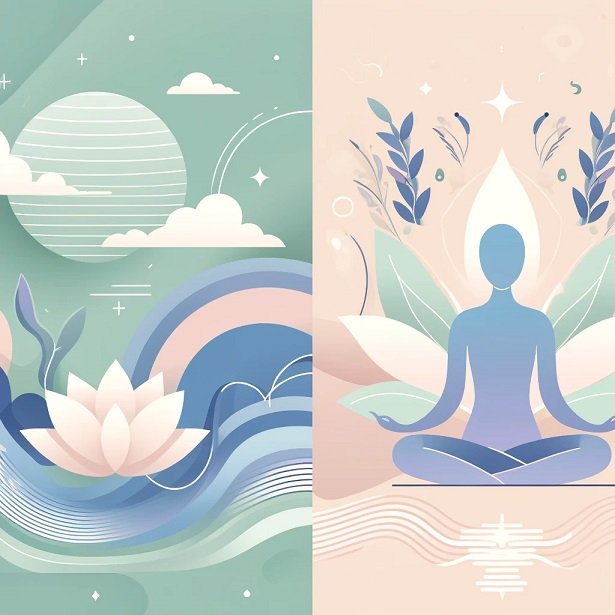
Overwhelmed by the chaos of daily life? Discover inner peace and serenity through the practice of mindfulness meditation. In this gentle guide inspired by the teachings of Thich Nhat Hanh, we will explore simple techniques to cultivate presence, awareness, and peace in your everyday life. Let’s initiate on a journey to calm the mind and nurture the soul with the transformative power of mindfulness meditation.
Preparing for Mindfulness Meditation
Creating a Conducive Environment
One of the key aspects of preparing for mindfulness meditation is creating a conducive environment that supports your practice. Find a quiet and peaceful space where you won’t be easily distracted. You may want to dim the lights or light a candle to create a soothing atmosphere. Eliminate any clutter or distractions in the room to help focus your mind.
Choosing a Comfortable Seating Position
An important part of mindfulness meditation is choosing a comfortable seating position that allows you to be alert and relaxed. Whether you prefer sitting on a cushion on the floor or in a chair, the goal is to find a position that supports good posture. Sit with your back straight but not rigid, allowing your body to be comfortable and at ease.
Meditation cushions or pillows can help elevate your hips above your knees, promoting a natural curve in your lower back and making it easier to sit for an extended period. Experiment with different seating options to find what works best for you and your body.
Focusing on the Breath
Bringing Awareness to the Breath
One of the foundational practices in mindfulness meditation is focusing on the breath. To begin, find a comfortable seated position with your back straight but not rigid. Close your eyes gently and bring your attention to your breath. Notice the natural flow of the breath as it enters and leaves your body.
Noticing the Sensations of the Breath
Breath is a powerful anchor for mindfulness. As you focus on your breath, pay attention to the sensations it creates in your body. Notice the rise and fall of your chest or the feeling of the air passing through your nostrils. These subtle sensations can help center your mind and keep you present in the moment.
The act of noticing the sensations of the breath can help cultivate a sense of calm and presence. By directing your attention to the physical experience of breathing, you can quiet the chatter of the mind and become more attuned to the present moment.
When the Mind Wanders, Gently Bring it Back
The mind has a tendency to wander, especially when we are trying to focus on one thing like the breath. When you notice your mind drifting off, gently acknowledge the distraction without judgment, and then guide your awareness back to the breath. It’s normal for the mind to wander, so be kind to yourself as you gently refocus.
An vital aspect of mindfulness meditation is recognizing when the mind has wandered and gently bringing it back to the present moment. This practice of gently redirecting the mind without criticism or frustration is a key element of developing mindfulness and cultivating a sense of inner peace.
Cultivating Mindfulness
Being Present in the Moment
Not sure where to start with mindfulness meditation? To begin, it’s necessary to focus on being present in the moment. Allow yourself to fully immerse in the current experience without dwelling on the past or worrying about the future. Pay attention to your breath, the sensations in your body, and the sounds around you. By grounding yourself in the present moment, you can cultivate a sense of peace and clarity.
Letting Go of Distractions and Judgments
Moments of distractions and judgments are natural during meditation. Acknowledge when your mind wanders, and gently guide your focus back to the present moment. Let go of any judgment or frustration that may arise when you get distracted. Remember that the practice of mindfulness is all about acceptance and compassion towards yourself.
Judgments can often cloud our perception and hinder our ability to stay present. By letting go of judgments during meditation, you create space for a deeper sense of awareness and self-compassion to grow.
Embracing the Imperfections of the Mind
Embracing the imperfections of the mind is crucial in mindfulness meditation. Understand that your mind will wander, and thoughts will arise – this is normal. Instead of striving for perfection, embrace the imperfections with kindness and understanding. Allow yourself to observe your thoughts without getting caught up in them, thereby fostering a sense of inner peace and equanimity.
With practice, you will learn to embrace the imperfections of your mind as valuable opportunities for growth and self-discovery. This acceptance will deepen your mindfulness practice and help you cultivate a more profound connection with yourself and the world around you.
Working with Thoughts and Emotions
Observing Thoughts without Attachment
To cultivate mindfulness, begin with observing your thoughts without attachment. Just like watching clouds pass by in the sky, acknowledge the thoughts that arise in your mind without judgment or entanglement. Allow them to come and go, noticing their transient nature without getting caught up in their stories or meanings.
Recognizing and Accepting Emotions
Without resistance, acknowledge your emotions as they surface during meditation. Emotions are a natural part of the human experience, and denying them can lead to inner turmoil. By embracing your emotions with a sense of acceptance and self-compassion, you can navigate them with greater ease and clarity.
It’s vital to remember that emotions, whether positive or negative, are impermanent. By allowing yourself to feel them fully without judgment, you can create space for healing and understanding within yourself.
Developing Compassion towards Oneself and Others
With a gentle heart, foster compassion towards yourself and others during mindfulness meditation. Recognize that each person, including yourself, is on a unique journey filled with joys and struggles. Practice sending loving-kindness and empathetic wishes to yourself, loved ones, and even those you may find challenging.
For instance, when difficult emotions arise, instead of criticizing yourself, offer words of comfort like “May I be gentle with myself in this moment.” Extend this kindness to others by silently saying, “May they find peace and happiness in the midst of difficulty.” Compassion not only nurtures emotional well-being but also fosters a sense of interconnectedness and understanding among all beings.
Body Scan and Physical Awareness
Once again, take a moment to ground yourself in the present moment before beginning a body scan meditation. This practice involves bringing your attention to different parts of your body, cultivating a deep sense of physical awareness.
Bringing Awareness to the Body
Awareness is the key to this practice. Start by scanning your body from head to toe, observing any sensations or feelings without judgment. Notice the contact your body makes with the surface beneath you, the weight of your limbs, the rhythm of your breath. This process helps you connect with your physical being and brings a sense of calm and presence.
Noticing Areas of Tension and Relaxation
With gentle curiosity, explore your body for areas of tension and relaxation. You may notice tightness in your shoulders, aches in your lower back, or the warmth of relaxation in your hands. Pay attention to these sensations without trying to change them. Simply observe and acknowledge what you feel.
The body scan meditation allows for deep relaxation and can help you release pent-up tension stored in different areas of your body. By bringing mindful awareness to these sensations, you can begin to cultivate a sense of ease and well-being within your physical self.
Cultivating Kindness towards the Body
With each breath, offer kindness and compassion to your body. Whether you are noticing tension or relaxation, approach these sensations with gentleness and care. Acknowledge any discomfort or pain with a sense of warmth and understanding, nurturing yourself with each breath.
A body scan meditation not only helps in releasing physical tension but also fosters a deeper sense of connection and love towards your body. By practicing kindness and compassion during this meditation, you can cultivate a harmonious relationship with your physical self, promoting overall well-being and inner peace.
Integrating Mindfulness into Daily Life
Despite the busy nature of modern life, integrating mindfulness into daily activities is crucial for maintaining a sense of peace and presence.
Practicing Mindfulness in Daily Activities
To fully integrate mindfulness into your daily life, infuse awareness into routine tasks such as walking, eating, or even washing dishes. Focus on the sensations, sounds, and movements involved in each activity. By bringing your attention to the present moment, you can cultivate a deeper appreciation for the simple joys of life.
Using Mindfulness to Manage Stress and Anxiety
Integrating mindfulness practices into your daily routine can help manage stress and anxiety effectively. By being fully present in the moment and observing your thoughts without judgment, you can cultivate a sense of calm and reduce the impact of stressors. Techniques such as deep breathing and body scans can be powerful tools to promote relaxation and reduce anxiety.
A regular mindfulness practice can rewire your brain to respond to stress more skillfully and build resilience in the face of challenges. By incorporating mindful moments throughout your day, you can create a sense of peace and clarity amidst the chaos of daily life.
Cultivating Gratitude and Appreciation
To deepen your mindfulness practice, engage in activities that promote gratitude and appreciation. Take time each day to reflect on the things you are grateful for, whether it’s a loving relationship, a beautiful sunset, or a simple moment of joy. By shifting your focus to the positive aspects of life, you can enhance your overall sense of well-being and contentment.
Activities like journaling or creating a gratitude jar can help you cultivate a habit of appreciation and mindfulness. These practices can bring a sense of lightness and joy to your daily life, fostering a mindset of abundance and positivity.
Plus, by expressing gratitude towards others and yourself, you can create a ripple effect of kindness and compassion in your relationships and community. Mindfulness and gratitude go hand in hand, offering a pathway to a more fulfilling and connected life.
Conclusion
On the whole, practicing mindfulness meditation is a powerful tool for cultivating inner peace, reducing stress, and enhancing overall well-being. By following the steps outlined in this guide with patience and dedication, you can start incorporating mindfulness into your daily routine and experience its numerous benefits. Remember to be kind and gentle with yourself during this process, as mindfulness is about being present in the moment and accepting things as they are.
As Thich Nhat Hanh beautifully said, “Walk as if you are kissing the Earth with your feet.” By approaching mindfulness meditation with this sense of reverence and gratitude, you can deepen your practice and find greater peace and harmony within yourself. May your journey towards mindfulness be filled with compassion, mindfulness, and tranquility.
